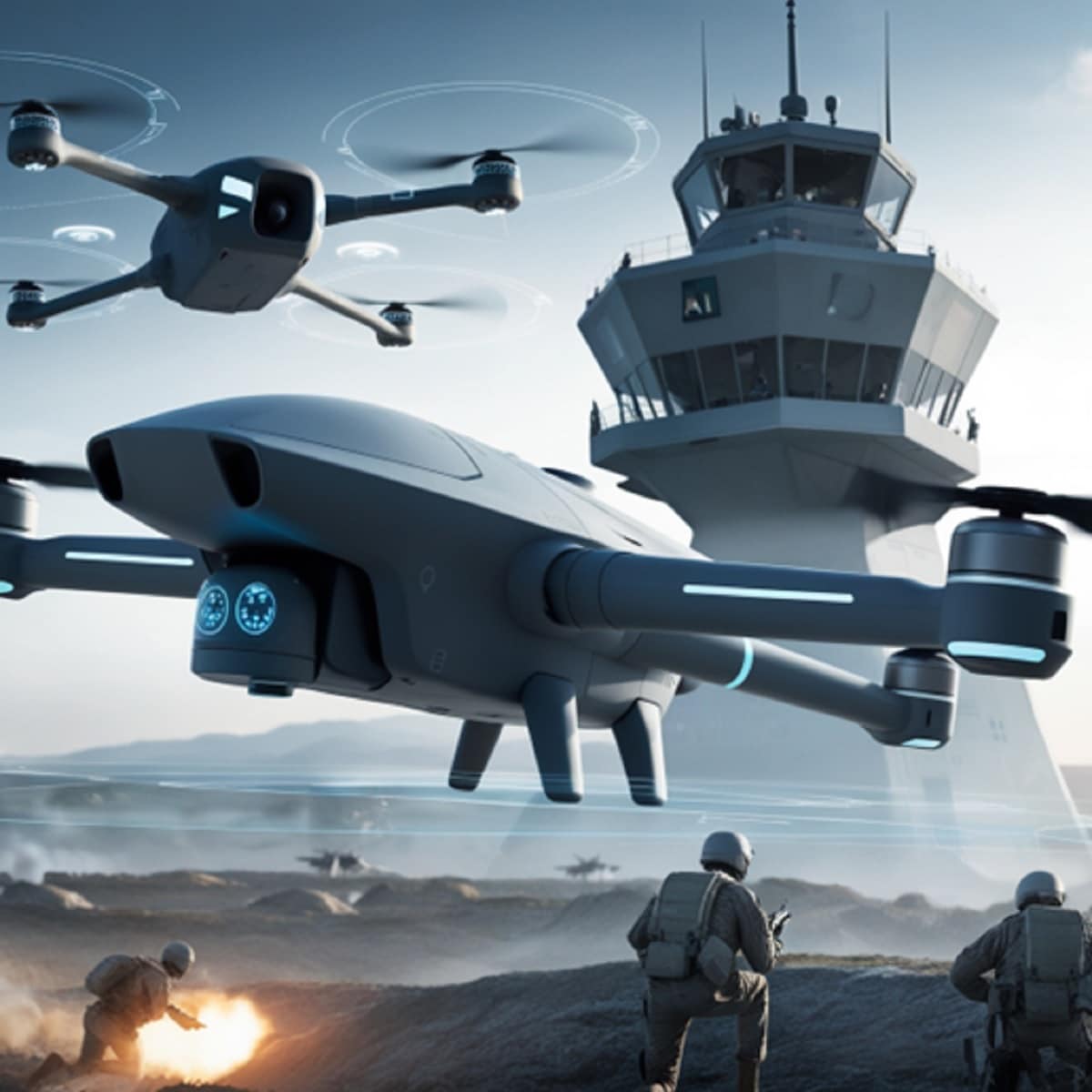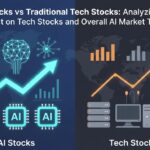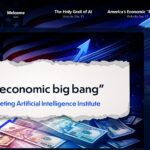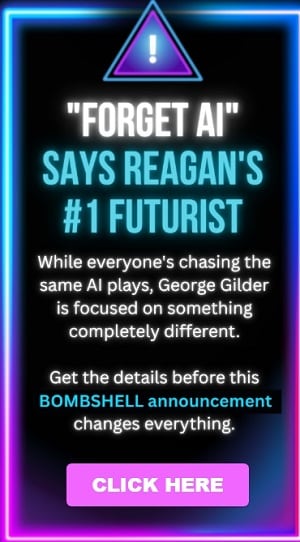The volatility of markets makes investors anxious yet some segments of business show strength combined with potential for high growth during periods of economic insecurity.
AI & Defense
The present market environment where inflation combines with geopolitical conflicts and technological developments causes both investors and policymakers to seek secure opportunities.
The sectors of Artificial Intelligence (AI) and Defense present themselves as sectors that maintain robustness and thrive within their fields.
Both private investors and public supporters demonstrate interest in these industries because they possess advantages from dual funding streams and current economic requirements. This comprehensive piece delves into the reasons behind these sectors becoming prime growth opportunities during the present unsettled economic period.
Dual-Use Technologies: AI and Defense Collaborating for National Security
Defensive techniques of today increasingly depend on artificial intelligence technology. Various military technologies emerged through the unification of artificial intelligence and defense capabilities including autonomous drones alongside smart missile guidance systems and battlefield analytics and cyber threat monitoring platforms.
The dual-purpose applications of such technologies appeal to government funding bodies so they invest in these areas. The mutual protection between defense and AI sectors happens through their combined national security objectives which allows funding support to continue without dependence on general economic situations.
Budget Shifts: Why Governments Are Increasing Spending in AI & Defense
The global defense spending continues to rise without any financial cuts elsewhere. Defense funding from the U.S. reached $850 billion during 2024 while dedicated resources for artificial intelligence modernization and research amounted to substantial proportions.
Through its Digital Europe Programme the European Union boosts its funding toward AI innovation initiatives. Government financial channelings clearly demonstrate a direct choice to build infrastructure which ensures national security and economic basis as stable growth drivers.
Institutional Investors Are Flocking to These Sectors
Institutional investors such as pension funds together with sovereign wealth entities choose to invest in AI and defense industries.
The long-term growth potential along with government-backed contracts combined with high barriers to entry protect incumbents as the cause for this investment trend. The riskiness of current market conditions makes stability and guaranteed financial returns exceptional in nature thus making these sectors appealing to investors with astute strategies.
Global Conflicts Are Fueling the Defense Boom
Geopolitical instability in the Ukraine-Russia conflict along with tensions in the South China Sea forces governments to hasten their military enhancement programs.
Defense spending has surged by governments worldwide for weapons together with AI-based surveillance systems as well as cyber warfare capabilities and unmanned systems deployments. Defence contractors together with AI firms currently experience a protracted business enhancement through necessary and urgent investments resulting from international military conflicts.
AI as Economic Infrastructure: Why It’s Not Just Another Tech Trend
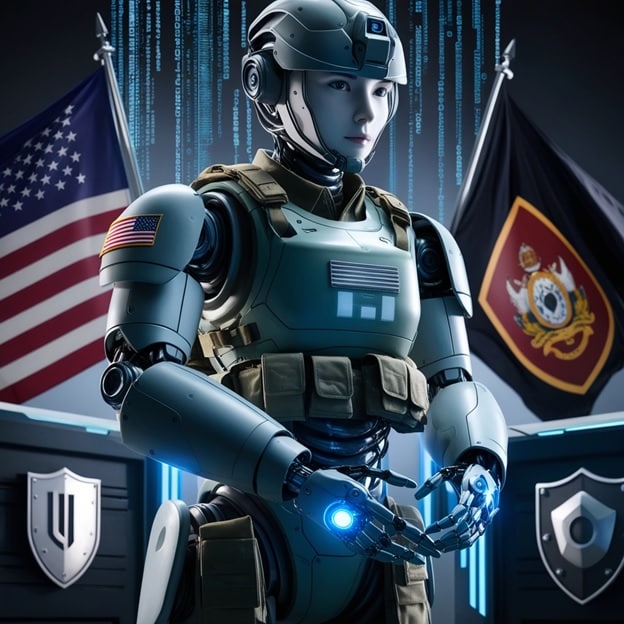
The applications of AI exceed typical functions of chatbots and image processing. AI currently operates throughout supply chains and financial systems and healthcare diagnostics as well as other critical operations.
The essential economic infrastructure has integrated AI thus making its implementation necessary for preserving national economic competitiveness. AI provides industries with cost-saving and task efficiency abilities which guarantee future investment opportunities due to rising operational expenses and staffing shortages.
Innovation Despite Uncertainty: How These Sectors Thrive in Chaos
Defense technology together with frontier technology tends to flourish when economic conditions decline. Security and automation expenses from governments grow when conflict and instability develop as well as during times of economic recession.
AI and defense establish a perfect correlation with this pattern. These two sectors expand their business through innovative problem-solving during difficult financial times which positions them perfectly to grow while others face decline.
Long-Term Vision: Why AI & Defense Are More Than Just Trends
AI defense strategy follows a proactive framework that exists within both domestic national policy documents as well as international agreements.
All four strategic entities namely the U.S., China, India and Europe have established decade-spanning strategies to lead AI developments within their defense sectors. These sectors will act as fundamental economic components within the future because of this forward-thinking strategy.
Cybersecurity: The Hidden Glue Between AI and Defense
The intersection of the defense field and artificial intelligence exists in cybersecurity.
Military and civilian infrastructures receive protection through security systems powered by artificial intelligence technology due to developing sophisticated cybersecurity threats. The intersection between these sectors enabled them to form a rapidly expanding market segment which produces more value than separate developments between these two sectors.
AI in Defense Supply Chains: Reducing Costs and Improving Efficiency
Predictive functionality of AI systems allows organizations to decrease supply waste and maintain optimal readiness. Defense contractors experience enhanced profitability together with enhanced government relationships as well as obtain long-term contracts which secure their financial stability.
International Alliances and Technology Sharing Boosting Growth
NATO alongside AUKUS act as sophisticated collaboration frameworks for military and technological development and research endeavors.
By sharing resources for AI defense research through joint ventures the development process advances at greater speed and distribution of costs occurs. The globalized model allows both sectors to build greater resistance and expansion capabilities.
The ESG Angle: Ethical AI and Sustainable Defense

The growing interest of investors focuses on evaluating Environmental Social Governance (ESG) elements. Defense organizations alongside artificial intelligence systems modify their workflows.
The development of ethical AI frameworks aims to minimize bias besides protecting privacy while defense companies are investing in green technologies which include electric military vehicles along with sustainable manufacturing. The implementation of ESG upgrades enhances the appeal of both sectors to investors who prioritize responsibility.
Education and Workforce Development: Building the Next Generation
Rising demand leads to an increasing demand for qualified professionals. Educational programs and defense technology certifications together with retraining initiatives receive support from both governments and private firms.
The developed ecosystem helps maintain a robust talent supply which decreases upcoming recruitment problems and enhances the industry’s overall durability.
Final Thoughts: Hot Sectors With Cold-Headed Logic
High-tech consumer goods along with speculative financial instruments have become less popular during today’s turbulent time.
New sectors emerging in the market combine innovation with necessity to support long-term strategic vision. AI together with defense represents stable foundations while serving as growth machines that will prosper in the future. These sectors grant policymakers along with entrepreneurs and investors both reliability and dynamism within a single investment package.
FAQ: AI and Defense Sectors in 2025
Why are AI and defense considered strong investment opportunities in 2025?
AI and defense sectors are robust due to their dual funding from government and private sources, driven by geopolitical tensions, technological advancements, and economic instability. These sectors thrive in volatile markets, offering stability and long-term growth potential through government-backed contracts and high barriers to entry.
How do AI and defense sectors collaborate?
AI enhances defense through dual-use technologies like autonomous drones, smart missile guidance, battlefield analytics, and cybersecurity platforms. These technologies align with national security goals, ensuring consistent funding regardless of economic conditions.
Why are governments increasing spending on AI and defense?
Global defense budgets, like the U.S.’s $850 billion in 2024, and programs like the EU’s Digital Europe, prioritize AI and defense to strengthen national security and economic stability. Geopolitical conflicts, such as the Ukraine-Russia war and South China Sea tensions, further drive spending on military modernization and AI-based systems.
Who is investing in AI and defense, and why?
Institutional investors, including pension funds and sovereign wealth entities, are drawn to these sectors for their long-term growth, government contracts, and stability in shaky markets. The high entry barriers protect established players, making them attractive for risk-averse investors.
How does AI contribute to economic infrastructure beyond defense?
AI is integral to supply chains, financial systems, healthcare, and other critical operations, driving cost savings and efficiency. Its role as essential infrastructure ensures ongoing investment to maintain national economic competitiveness.
How do AI and defense thrive during economic uncertainty?
These sectors flourish in chaos due to increased government spending on security and automation during conflicts or recessions. Their ability to innovate and solve problems in tough times positions them for growth while other industries struggle.
What role does cybersecurity play in AI and defense?
Cybersecurity is a critical intersection, with AI-powered systems protecting military and civilian infrastructure from sophisticated threats. This rapidly growing market segment enhances the value of both sectors.
How does AI improve defense supply chains?
AI optimizes defense operations, such as ammunition supply and aircraft maintenance, through predictive analytics. This reduces waste, improves readiness, and boosts profitability, securing long-term government contracts.
How do international alliances support AI and defense growth?
Frameworks like NATO and AUKUS enable resource sharing and joint AI-defense research, accelerating development and distributing costs. This global collaboration enhances sector resilience and growth.
Are AI and defense aligning with ESG principles?
Yes, both sectors are adopting ESG practices. AI focuses on ethical frameworks to reduce bias and protect privacy, while defense invests in green technologies like electric vehicles and sustainable manufacturing, appealing to responsible investors.
How are workforce demands being met in these sectors?
Governments and private firms support educational programs, certifications, and retraining initiatives to meet the rising demand for skilled professionals. This ensures a steady talent pipeline, strengthening industry durability.
Are AI and defense just short-term trends?
No, these sectors are long-term economic pillars, backed by decade-spanning strategies in the U.S., China, India, and Europe. Their integration into national security and economic frameworks ensures sustained growth.

